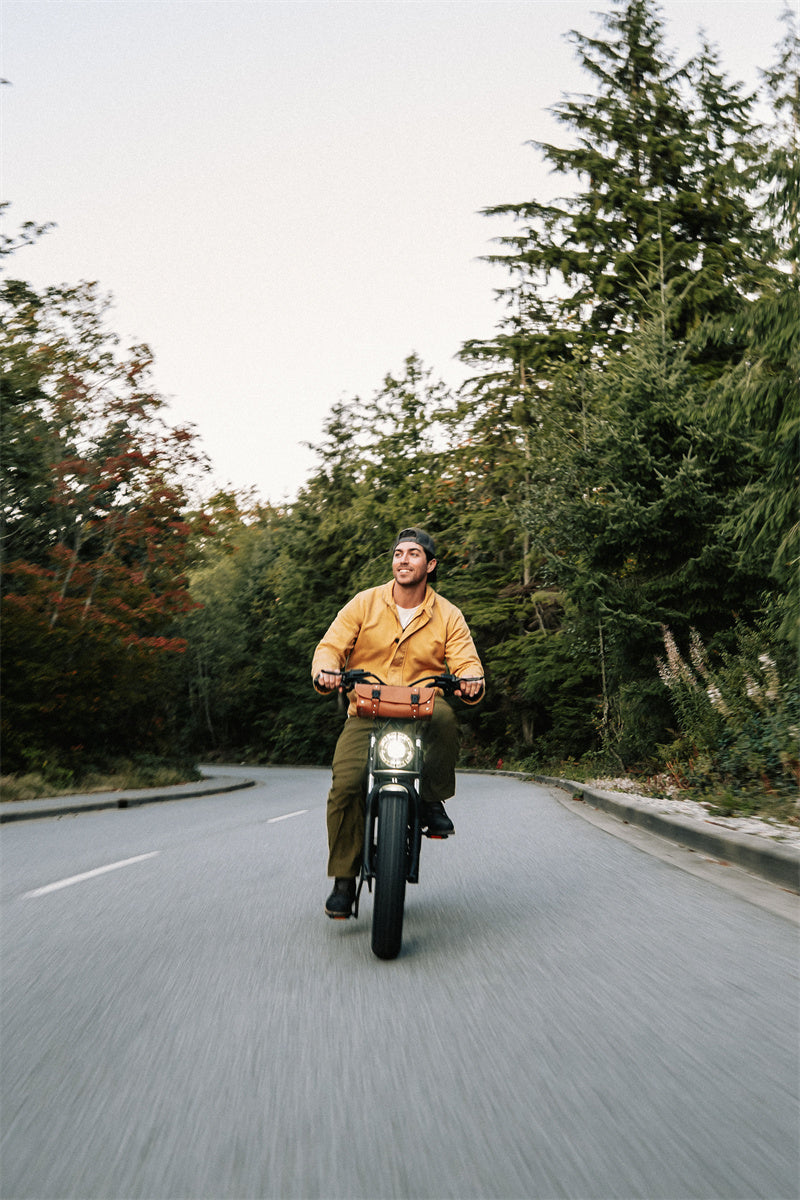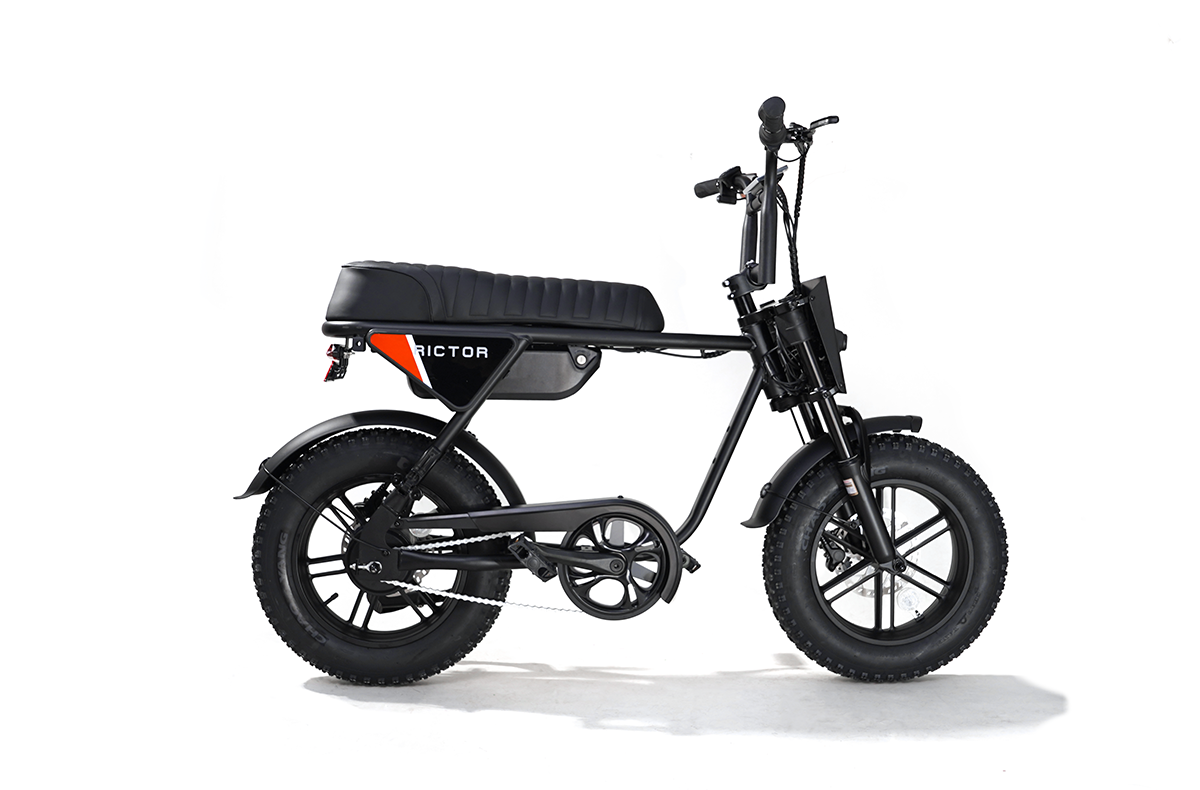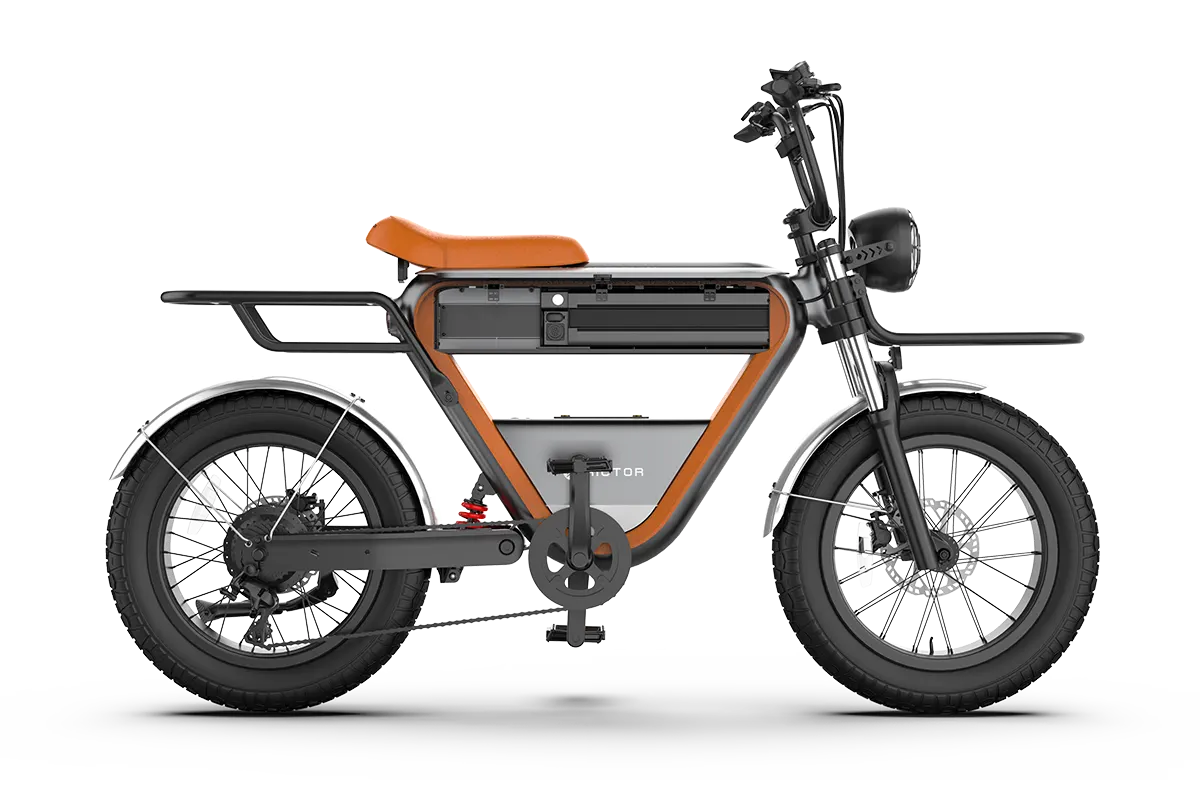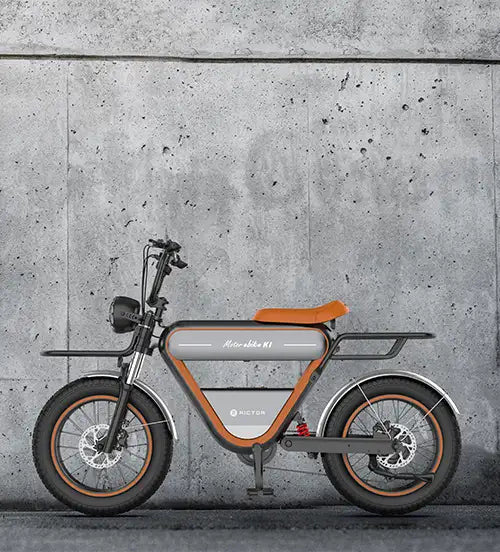
Riding Your E-Bike in Wet Weather: Pro Tips for a Smooth Ride
Your electric bike has quickly become a key part of your daily routine—whether you’re zipping through traffic to make it to a meeting, picking up groceries for dinner, or heading out to meet friends on the weekend.
But when the sky turns gray and the rain starts falling, you might wonder if your trusty ride can handle it.
The answer is yes, most e-bikes are safe to ride in the rain, with just a few extra precautions.
“The Rictor K1 has undergone extensive testing to ensure its waterproof capabilities.
From rainy streets to muddy trails, it’s built to keep performing, no matter what the weather throws at it,” notes the director of product management at Rictor.
Designed specifically for challenging outdoor conditions, the Rictor K1 ebike stands out as an excellent choice for riders who don’t want to be limited by the elements.

Are Electric Bikes Waterproof or Water Resistant
Riding in the rain is sometimes unavoidable, especially for daily commuters or riders who enjoy the outdoors year-round.
Bike dealers often advertise their bikes as "waterproof," but is that the kind of waterproof we’re thinking of?
In reality, waterproof and water-resistant are two very different things.
While many bikes are labeled as water resistant, this doesn’t mean they can handle heavy rain or complete submersion in water
Most electric bikes are water-resistant, not fully waterproof.
This distinction is important when considering how much exposure to rain or water your e-bike can handle.
Water resistant means that your bike can endure light rain or occasional splashes without significant damage, but it isn't designed for full immersion in water or prolonged exposure to heavy rain.
To truly understand how well your e-bike can handle wet conditions, you need to look at its IP (Ingress Protection) rating.
The IP rating is an internationally recognized standard that defines how well a device or product is protected from solids (like dust) and liquids (like water). The IP rating consists of two numbers:
-
The first number refers to the level of protection against solid objects (like dust and dirt), ranging from 0 (no protection) to 6 (dust-tight).
-
The second number indicates protection against liquids (such as water), ranging from 0 (no protection) to 9 (protection against high-pressure water jets).
For example, an IP65 rating means the e-bike is completely protected from dust (that’s the "6") and can handle low-pressure water jets from any direction (the "5"). This level of protection is great for riding in moderate rain. If your e-bike has an IP67 rating, it takes things up a notch. It’s still dust-tight, but now it can also handle being temporarily submerged in water—up to 1 meter deep for about 30 minutes.
| IP First Number (Solid Protection) | IP Second Number (Water Protection) |
|---|---|
| 0 - No protection | 0 - No protection |
| 1 - Protected against solid objects > 50mm | 1 - Protection against vertically falling water drops |
| 2 - Protected against solid objects > 12.5mm | 2 - Protection against water drops when tilted 15° |
| 3 - Protected against solid objects > 2.5mm | 3 - Protection against spraying water up to 60° |
| 4 - Protected against solid objects > 1mm | 4 - Protection against splashing water from any direction |
| 5 - Dust-protected (limited ingress of dust) | 5 - Protection against low-pressure water jets |
| 6 - Dust-tight (no ingress of dust) | 6 - Protection against powerful water jets |
| 7 - Protection against immersion up to 1 meter | |
| 8 - Protection against continuous immersion | |
| 9 - Protection against high-pressure, high-temperature water jets |
SEE ALSO The RICTOR K1 is the BEST ALL AROUND EBike Under $2,500!

Will Rain Mess with Your E-Bike’s Battery and Range
While electrical bikes are built to handle wet conditions, rain can still impact performance, particularly when it comes to the battery and motor.
Batteries are one of the most crucial components of an electric bike, and their efficiency can decrease in cold, wet weather.
Lithium-ion batteries, which are commonly used in e-bikes, don’t perform as well in colder temperatures, so rain combined with chilly conditions can reduce their power output and overall range.
The motor can also be affected by wet conditions. Water may seep into the motor housing if the seals aren’t tight enough, leading to issues like rust or short-circuiting over time.
Most high-quality e-bikes are designed to resist water infiltration to a certain extent.
Wet weather not only affects the motor and battery but also increases the resistance your bike faces on the road, which means the bike requires more power to maintain speed.
Cold temperatures can lower the battery’s ability to hold a charge, further reducing your range. Riders might notice a drop of 10-20% in battery life when riding in cold and rainy conditions.
It’s always a good idea to plan for shorter rides when heading out in the rain and charge your battery fully before starting, just in case you need that extra power to make it home.
Rain Precautions for Safe Riding
Safety should be your top priority when riding an e-bike in the rain. Wet roads can become slippery, and visibility might be reduced for both you and surrounding drivers.-
Slow Down: Wet roads mean reduced traction. Lowering your speed will help you avoid skidding and give you more time to react to hazards.
-
Increase Braking Distance: Rain reduces the effectiveness of brakes, particularly if your e-bike uses rim brakes. Disc brakes perform better in wet conditions, but you should still allow for longer braking distances.
-
Use Lights and Reflective Gear: Rain can reduce visibility, so it’s essential to make sure you’re visible to others on the road. Front and rear lights, along with reflective gear, can make a huge difference in keeping you safe.
-
Choose the Right Gear: Waterproof clothing and shoes will keep you comfortable, while non-slip gloves will improve your grip on the handlebars.
Braking in the rain requires extra care. Disc brakes are much more effective than rim brakes in wet conditions.
Rim brakes rely on friction between the wheel rim and the brake pads, which can be compromised when wet.
Disc brakes, operating away from the wheel surface, are more reliable under rainy conditions.
If your e-bike has rim brakes, remember to allow for longer braking distances and expect a slight delay in stopping power.
Upgrading to disc brakes is a good option if you frequently ride in wet weather.
Proper maintenance after a rainy ride can significantly extend the lifespan of your e-bike.
-
Dry It Off: Use a dry cloth to wipe down all exposed surfaces, paying close attention to the display, motor, battery, and connections. This helps prevent corrosion and rust.
-
Check for Water in the Motor: Some motors have drainage holes that can allow water to escape. Check these holes to ensure there’s no moisture buildup inside the motor housing.
-
Lubricate the Chain: Rain can wash away the lubrication on your bike’s chain, leading to rust and decreased efficiency. After drying the bike, apply a fresh layer of chain lubricant.
Stay Dry, Ride Safe
Tires play a significant role in how well your e-bike handles wet conditions.
Wider tires with deep tread patterns provide better traction on wet roads, helping prevent slips.
Knobby tires, often found on mountain bikes, are great for off-road use, but they may not be as efficient for city riding.
If you're frequently riding on wet surfaces, it’s best to look for all-weather tires specifically designed for grip and durability in wet conditions.
There are also plenty of accessories designed to enhance your wet-weather riding experience.
Here are a few must-haves:
-
Use Waterproof Covers: Many e-bike accessories include waterproof covers for displays and controllers. These covers are easy to install and remove, protecting sensitive electronics from direct exposure to rain.
-
Add Fenders and Mudguards: To reduce splashing from the tires, fenders are a must-have. They prevent water from being flung upwards onto the bike and rider, helping keep both you and the components drier.
-
Waterproof Bags for Battery: Even though most e-bike batteries are well-sealed, adding an extra layer of protection can make a difference in heavy rain. Using a waterproof battery bag or cover helps protect the battery casing from moisture.
-
Store Indoors After Rides: After riding in wet conditions, it's essential to store your e-bike in a dry location. Letting it sit in the rain or a damp garage can increase the chance of water seeping into sensitive components.
-
Handlebar and Seat Covers: These covers help protect sensitive areas from rain, ensuring that your seat and handlebars remain dry for your next ride.
FAQs
Can an electric bike go uphill easily?
Yes, electric bikes are equipped with motors that provide pedal assistance, making it easier to tackle uphill climbs. The power of the motor, usually measured in watts, along with the torque, determines how well an e-bike can handle steep inclines. More powerful e-bikes are better suited for climbing hills, especially when combined with a multi-speed drivetrain.
Do I need a driver’s license to ride an electric bike?
In many regions, e-bikes that meet certain speed and motor power limitations do not require a driver’s license to operate. However, laws vary depending on the country or state, so it's important to check your local regulations. Class 1 and Class 2 e-bikes typically fall under this category, whereas Class 3 e-bikes or more powerful models may require a license.
How do I secure my electric bike against theft?
To secure your e-bike, consider investing in a high-quality U-lock or chain lock, and lock your bike to a fixed, immovable object. For added security, remove the battery and take it with you when parking. Some e-bikes also come with GPS tracking systems that allow you to locate your bike if it’s stolen.




